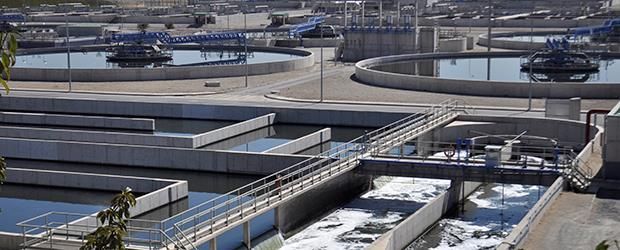Aguas Andinas to Turn Wastewater Treatment Plants into 'Bio Factories'
Published on by Water Network Research, Official research team of The Water Network
Chile water utility Aguas Andinas aims to convert its wastewater treatment plants into "Bio factories" by 2022, said CEO Narciso Berberana.

Source: Aguas Andinas
This means that the installations will be energy self-sufficient, and will produce zero emissions and zero waste.
In his address to the Water in Industry 2017 congress in Santiago, organized by Gecamin, Berberana said that Aguas Andinas is "fully committed to the development of the country."
He highlighted that Chile is at a "strategic advantage in having the cheapest water of the OECD", and that Aguas Andinas would work to improve its environmental measures while also keeping prices low. Berberana emphasized that Aguas Andinas has been working to this end, having spent US$2.4bn on improvements between 2002 and 2016.
However, he added, the work isn't complete yet, as the city of Santiago currently suffers from what he called "hydrological stress." Santiago only has 600m3 per person each year, when the standard is 2,000m3 per person.
According to Berberana, this initiative "is integral for all company installations, not only water plants, but also in management of pumping stations, wells, etc".
Read more: BN Americas
Media
Taxonomy
- Treatment
- Sewage Treatment
- Wastewater Treatment
- Wastewater Collection
- Integrated Water Management
- Zero Discharge
- Water Utility
- Water Management
- Utility Management
- water treatment
2 Comments
-
I must agree with my colleague Jean Marius. You may have forgotten to link the specific information. We all are aware that collecting loose electrons from the bio degrading process is now current technology. Please clarify a few items if you will. 1. Have you stopped using chlorine to allow the bio process to work at maximum efficiency? 2. Are you using RNA microbes, DNA Microbes, or a combination of both. 3. Are you reusing/recycling the now potable waters or just dumping it back into a river , to the ocean. I am sure the continued steps include setting up residential and business waste water systems. This would eliminate the need and cost of the infrastructure. Please send info for peer review. Thank you kindly.
-
Good morning you have to read and study the text. How do we see the bio plant? Nothing.
Mechanization will be self-sufficient. OK what does self-sufficiency bring to the purification? Nothing
The new technicity will not produce emissions.? What show? that of the technicity or that of sewage effluent?
The new technicity does not waste or more.
We are already forced to reconsider the problem of step: a huge financial waste.
Where is the reduction in waste? What sector?
The result balance of a step is and always remains void. The principle of wastewater treatment is always based on filtration that has no vocation to purify wastewater. This is always the same pattern as defecation in the open air, excrement will end up in the environment in one form or another. Such a statement is powder in the eyes.Bonjour il faut bien lire et étudier le texte. En quoi voit-on du bio usine? RIEN.
La mécanisation sera autosuffisante. Ok! Qu’est ce qu’apporte l’autosuffisance à l’épuration ? RIEN
La nouvelle technicité ne produira pas d’émissions.? Quelle émission? celle de la technicité ou celle provenant des effluents d’eaux usées?
La nouvelle technicité ne gaspille pas ou plus.
Déjà on est bien obligé de reconsidérer la problématique des STEP: un énorme gaspillage financier.
Ou va se situer la réduction du gaspillage? sur quelle secteur?
Le bilan de résultat d’une STEP est et reste toujours NUL. Le principe de traitement des effluents d’eaux usées est toujours basé sur la filtration qui n’a aucune vocation d’épurer les eaux usées. Cela reste toujours le même schéma identique à la défécation à l’air libre, les excréments finiront dans l’environnement sous une forme ou une autre. Une telle déclaration c'est de la poudre aux yeux.